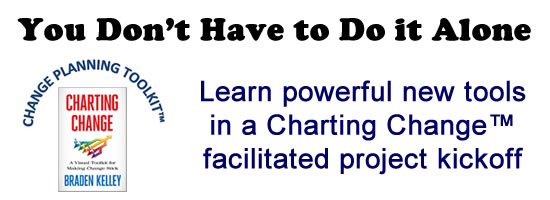Fluid Intelligence – Are you getting enough sleep to innovate?
 Most Americans don’t even come close to getting enough sleep. The average in the USA is 6.8 hours, and in my anecdotal experience, many people working in high pressure, ‘innovation on demand’ jobs probably get considerably less than that.
Most Americans don’t even come close to getting enough sleep. The average in the USA is 6.8 hours, and in my anecdotal experience, many people working in high pressure, ‘innovation on demand’ jobs probably get considerably less than that.
But a couple of studies suggest very strongly that sleep may be even more important for innovators than for most other occupations, and crucial to consistently coming up with innovative ideas. I’m not talking about avoiding exhaustion, or sleep deprivation. It doesn’t take a detailed psychology or neuroscience study to determine that someone who is exhausted is probably not at his or her creative best. But creativity may suffer long, long before we get to the exhausted stage.
The first study is a recent one published in the Journal of Cognitive Neuroscience by Fang et al (https://www.ncbi.nlm.nih.gov/pubmed/27626227).
This discusses something called fluid intelligence, or the ability to identify patterns and relationships, to connect dots, and take insight from one conceptual space, and reapply it to another. This kind of intelligence is at the heart of innovative thinking, as perhaps the most critical skill an innovator can have is the ability to spot patterns, and make surprising, yet useful connections. Whether it is Dyson reapplying sawmill technology to create the Dyson vacuum cleaner, or Watson and Crick’s identification of the helical structure of DNA, analogy and pattern recognition lie at the heart of a great many Eureka moments.
The study suggests that fluid intelligence correlates with something called fast parietal spindles. These are short bursts of intense neurological activity that occur during non REM sleep. The more we sleep, the more of these events occur, and the more of these we experience, the higher our fluid intelligence quotient. Simply put, skimp on sleep, and our ability to make innovative connections and recognize patterns is likely compromised.
The second study is a slightly older one, and a classic in Behavioral Economics, published in the Proceedings on The National Academy of Sciences by Danziger et al (https://www.ncbi.nlm.nih.gov/pmc/articles/PMC3084045/). It describes an effect called decision fatigue, sometimes called ego depletion. The study followed eight Israeli judges as they ruled on over 1,000 parole applications. They discovered that at the start of the day, the judges granted about around two-thirds of the parole applications put in front of them. Â But by just before lunch, that number tumbled to zero. The approval rate shot back up after lunch and after and afternoon coffee break to the original two-thirds, but again fell sharply to zero after a few cases had been heard. The hypothesis for this rather alarming observation is that decision-making is mentally taxing, and as the judges get tired, they start looking for easy answers and defaults. In this case, the easy answer is to maintain the status quo by denying parole.
The obvious insight is that you are ever in a position of needed to apply for parole, try and get the first slot in the morning.  But the problem for innovation is that the last thing we want are easy, obvious or default answers. Instead we want new, counter intuitive, surprisingly obvious ideas. But if our innovators start off tired, they may never even consider big, beautiful, but less obvious ideas.  And to make things worse, these effects occur below our threshold of awareness. The judges were completely unaware that their parole decisions were influenced by the time of day. And we as innovators will be equally unaware that a lack of sleep may be preventing us from even considering bigger, less obvious concepts, or that we are missing important patterns. We don’t know what we don’t know, and we don’t miss what doesn’t even occur to us.
Typically we think about work life balance in terms of employee satisfaction and retention. But maybe ensuring employees have enough time for rest, downtime and sleep may have a less obvious, but even more important impact on (innovation) productivity. Einstein reportedly slept for 10 hours a day. Are you and your team nurturing your innovative capability to a similar degree? And does your company culture encourage you and your fellow innovators to take breaks, and provide enough time for relaxation and sleep? If not, you may have a quantity versus quality issue. If you are coming up with too many small ideas, and not enough big ones, creating a culture that encourages more sleep could be at least one answer.
Wait! Before you go…
Choose how you want the latest innovation content delivered to you:
- Daily — RSS Feed — Email — Twitter — Facebook — Linkedin Today
- Weekly — Email Newsletter — Free Magazine — Linkedin Group
 A twenty-five year Procter & Gamble veteran, Pete Foley has spent the last 8+ years applying insights from psychology and behavioral science to innovation, product design, and brand communication. He spent 17 years as a serial innovator, creating novel products, perfume delivery systems, cleaning technologies, devices and many other consumer-centric innovations, resulting in well over 100 granted or published patents. Follow him @foley_pete
A twenty-five year Procter & Gamble veteran, Pete Foley has spent the last 8+ years applying insights from psychology and behavioral science to innovation, product design, and brand communication. He spent 17 years as a serial innovator, creating novel products, perfume delivery systems, cleaning technologies, devices and many other consumer-centric innovations, resulting in well over 100 granted or published patents. Follow him @foley_pete
NEVER MISS ANOTHER NEWSLETTER!
LATEST BLOGS
Credit Card Shenanigans
It must be great to be in the credit card business in the United States. Demand is relatively inelastic and regulation is lax, so you can charge whatever you want for an interest rate, increase your fees once or twice a year, and make additional money off cash withdrawals and foreign exchange transactions.
Read MoreBuilding an Experience
As people become ever more immune to traditional advertising and marketing, branding will become more important. Branding is all about building an emotional connection with customers. Making the decision to follow a strategy focused on building a brand is not without peril, however, as it means that you will have to choose to not do certain things, like pursue a low price strategy.
Read More- « Previous
- 1
- …
- 4,132
- 4,133
- 4,134




